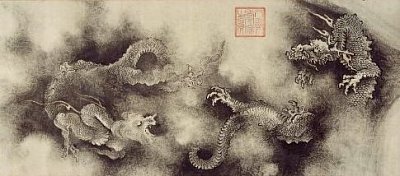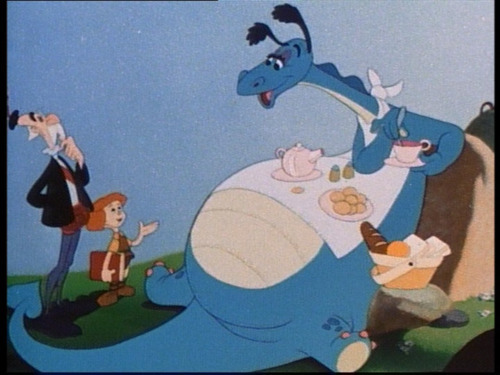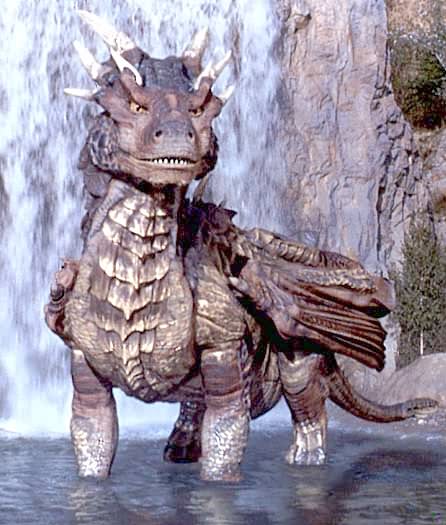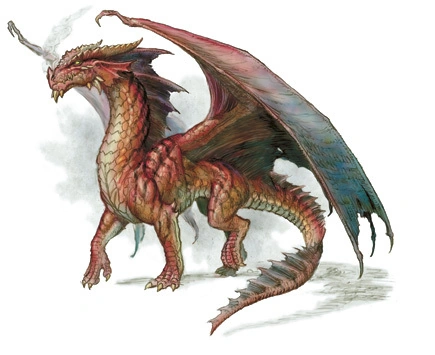Ever since I was a small child, dragons have had an indelible hold on me. I went through a protracted phase were I was a dragon myself, covered in scales, able to fly, able to breathe fire and incinerate anyone who tried to make me do whatever I didn't want to do. And why wouldn't five-year-old-me want to become a dragon? Of all the inhabitants of the fantasy bestiary, the dragon has a uniquely entrenched position in the human imagination. Every mythological tradition in the world has some variant of the dragon within it. The perspective on the dragon varies from culture to to culture, but the dragon has continually endured, whether as a fearsome monster or a benevolent omen of good fortune. Indeed, as twentieth century fiction has evidenced, these two poles curiously begin to melt into one another.
Battling a dragon is an ancient storytelling motif, particularly in Western traditions. The Old English poem Beowulf is among the earliest versions of this story(though it was possibly influenced in turn by Norse mythology), yet it is also a quasi-anamoly to the subsequent tradition. Yes, the hero dies in battle with a fire-breathing dragon, but the dragon has no malice; the other monsters in the poem, Grendel and his mother, are described in much more spiritually negative terms than the dragon. The dragon is an awesome force of nature, powerful and deadly, but not evil. The later medieval tradition, taking its lead from the Biblical Book of Revelation, cast the dragon as a personification of the forces of darkness, vanquished by the power of Christian faith, personified by the dragon-slaying knight. St. George, the patron saint of England, is a standard prototype, as in Book I of Edmund Spenser's The Fairie Queene(technically a Renaissance poem paying homage to a medieval tradition, but never mind).
 |
| "St George Fighting the Dragon", by Raphael |
Eventually, the dragon was given the ability to speak, which can also be read as an extension of Satanic influence(the devil has a long standing reputation for eloquent deception). JRR Tolkien, medievalist that he was, memorably put this trope to use with his depiction of Smaug in The Hobbit(1937). One of the highlights of this book is the exchange of riddles between the hobbit Bilbo Baggins and the wicked and wordy dragon inside the mountain's treasure horde. Another fantasy author, Ursula K. LeGuin, also gave dragons an intimidating eloquence, though to rather different ends. The dragons featured in her Earthsea Cycle are awesome creatures, but their fearful power comes from a source beyond ready human comprehension; the language that they converse and riddle in is the same language human beings seeking to practice magic spend years and years trying to master the basics of. The Earthsea dragons are not actively hostile to humans, nor helpful(with the exception of the third book in the series, The Farthest Shore). They have other matters to deal with.
 |
| The third book in LeGuin's Earthsea Cycle |
 |
| First edition of Tolkien's massively influential fantasy story |
A quick perusal of dragons in Asian cultures reveals a striking difference. Rather than a Satanic monster, the dragon is depicted as a benevolent and wise creature. Chinese New Year celebrations often center around a dragon ushering in the coming year, an omen of good fortune to rule out whatever bad influence from the year past. As Joyce Hargreaves points out in her charming volume A Little History of Dragons, "Ancient Chinese writers describe four types of dragon: the Tian-Lung (Celestial Dragon), who guards the dwellings of the gods; the Fucang-Lung(Dragon of Hidden Treasures), who guards the hidden wealth of the earth; the popular Shen-Lung(Spiritual Dragon) who controls the rain and winds and whose five-toed Imperial image the Emperor alone was permitted to wear; and the celebrated Ti-Lung(Earth Dragon) who holds the rivers and streams in its power."(12) .
 |
| Detail from Chen Rong's 1244 scroll painting "Nine Dragons" |
If the Asian dragon's connection to the natural elements doesn't carry the associations with wickedness that it does in Western stories, it is possibly due to a cultural grounding in Daoist or Buddhist religious traditions; medieval Christianity's reading of the world as fallen and sinful inevitably played into the presentation of the dragon, that most formidable representation of the powers of nature. There are also fairy tale tropes, particularly in China and Korea, of kings who transform into dragons by swallowing a pearl, another element uncommon in European stories. It isn't difficult to trace such representation to Hayao Miyazaki's film Spirited Away(Sen to Chihiro no Kamikakushi) and its dragon Haku, who is both a river god and alternates between dragon and human form. Miyazaki's film contains one of the best depictions of an Asian dragon as one is likely to encounter.
 |
| Spirited Away: The dragon as river god |
But one of the most piquant aspects of the cinematic depiction of dragons is how, almost inexorably, the characteristics of the Western dragon and the Eastern dragon seem to blend into one another.
To be certain, there are examples of the
battle-with-an-evil-dragon prototype in films, from Prince Philip’s showdown
with Maleficent in Sleeping Beauty(1959),
to Dragonslayer(1981), to the fight
with the three-headed fire breather in Willow(1988).
But just as often in cinema, the ethos of the Asian dragon manifests itself,
often in the mode of a friendly dragon. More often than not, such dragons are
used to comic, cuddly effect, as in Disney’s 1941 short The Reluctant Dragon or Pete’s
Dragon(1977). The Neverending Story(1984) features a dragon who owes much to
Asian aesthetics in his design, though I’ve always found Falkor more canine
than draconian.
 |
| Sleeping Beauty(1959) |
 |
| The Reluctant Dragon(1941), adapted from a Kenneth Grahame story |
One of my personal favorite dragon movies—really one of my
favorite movies period—is Dragonheart(1996),
which is noteworthy for its achievement in merging the Western and Eastern
dragon aesthetics into a single movie. Draco(voiced by Sean Connery, who has
about the best dragon-voice one is likely to find) is wise and noble like the
beasts of Japan or China, and is often situated near rivers and waterfalls, but
he also carries the fire-breathing prowess of a medieval dragon. There is a
protracted battle between a dragon and a knight, though it is used to very
different ends here than traditionally. For anyone familiar with dragons and
the mythology surrounding them, it is an especially rich achievement.
 |
| Draco(Sean Connery) in full view |
 |
| Original poster for the film |
Sources
Hargreaves, Joyce. A Little History of Dragons. Walker&Company: New York. 2009. Print.










No comments:
Post a Comment